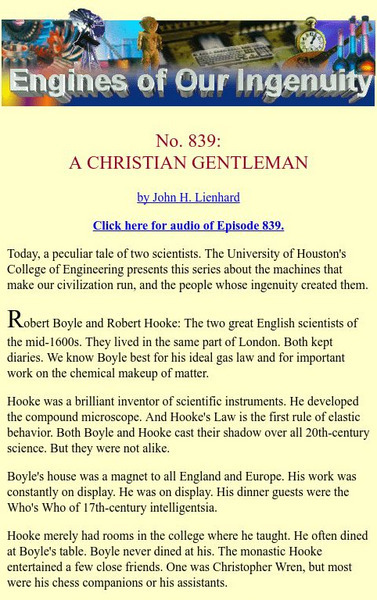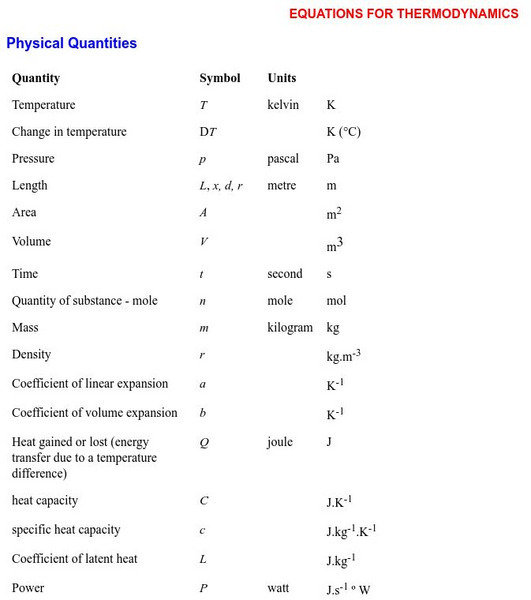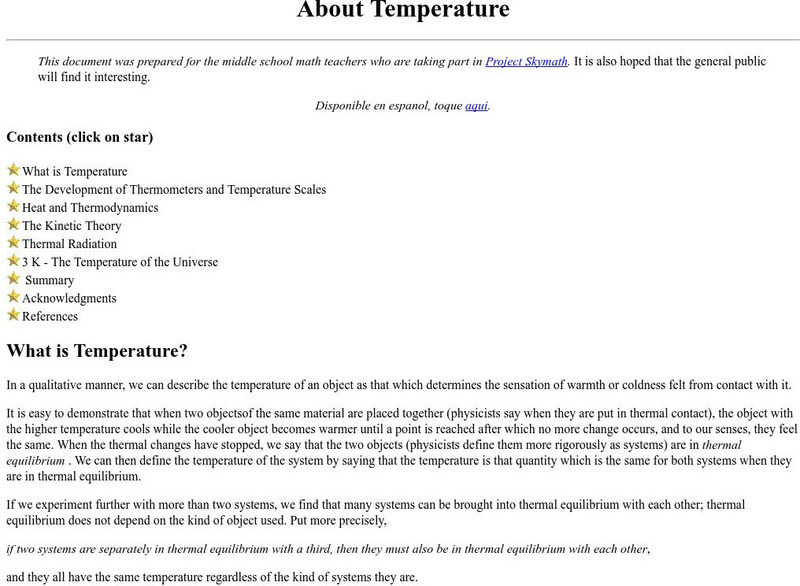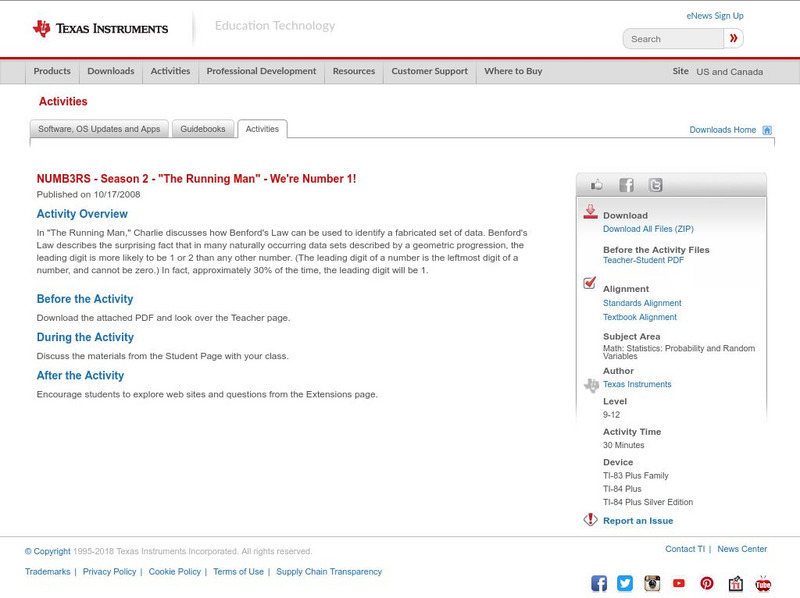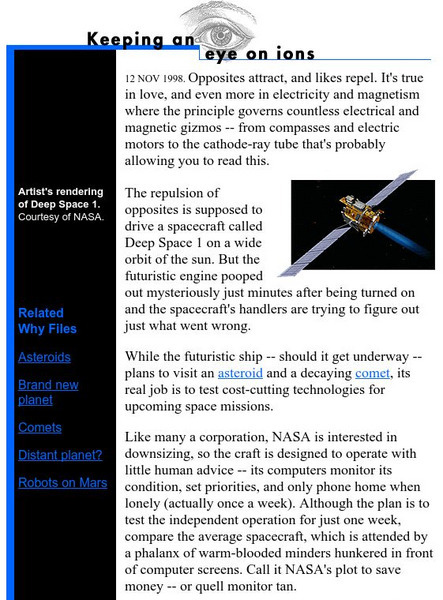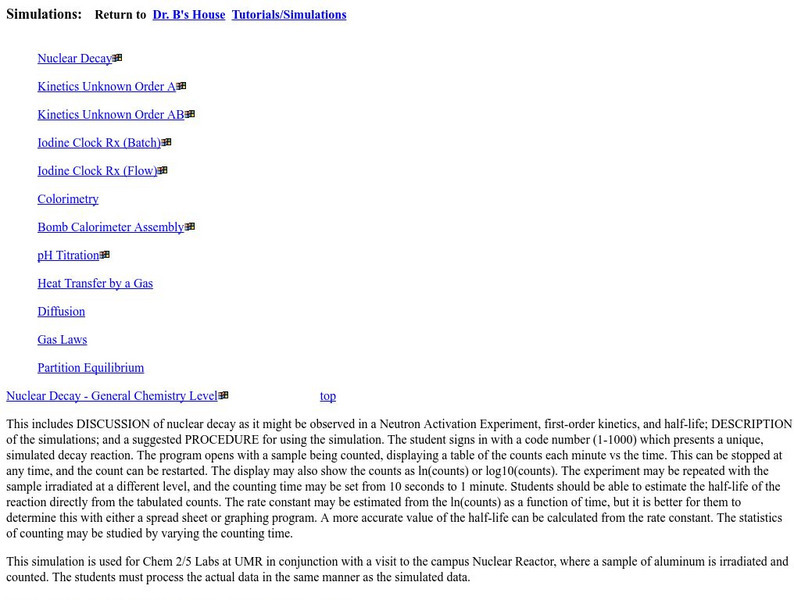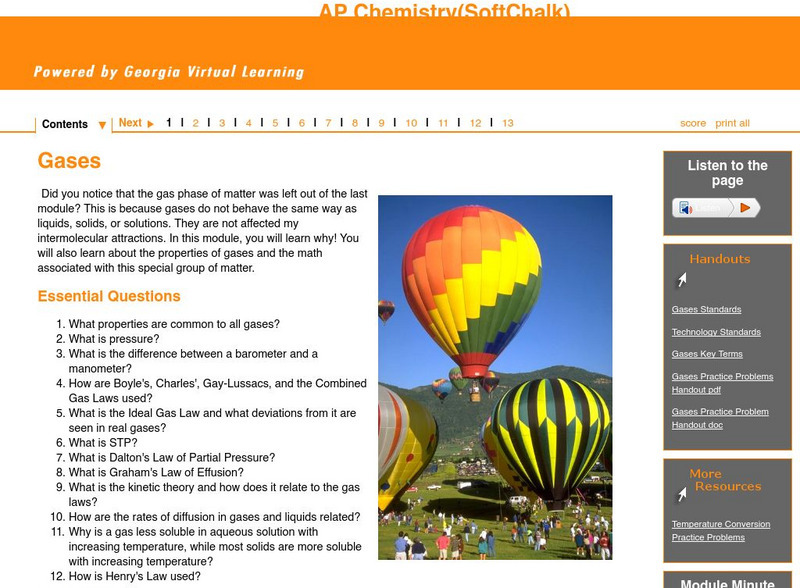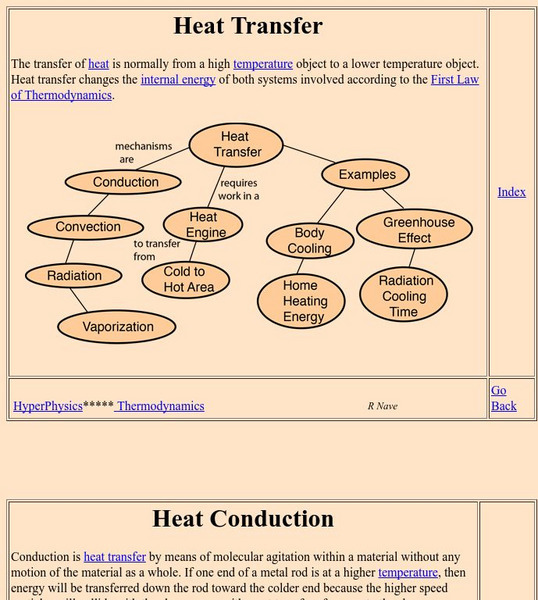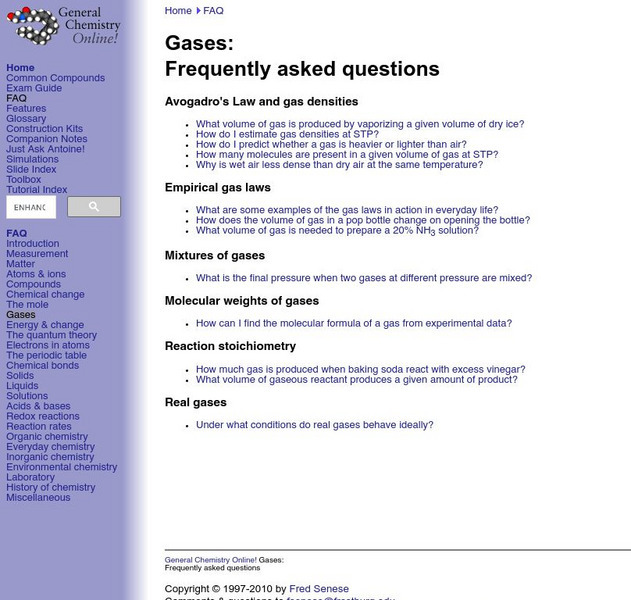Hi, what do you want to do?
PBS
Pbs Learning Media: Discovering Air
Our understanding about the air we breathe has changed dramatically through time. This illustrated timeline from the NOVA Web site tracks the changing thought on air and the creation of the Periodic Table of the Elements.
University of Houston
University of Houston: Engines of Our Ingenuity: A Christian Gentleman
The transcript of a talk given on the syndicated radio broadcast titled "The Engines of Our Ingenuity." The story contrasts the lives and personalities of two scientific colleagues - Robert Hooke and Robert Boyle. Discusses their...
University of Sydney (Australia)
Equations for Thermodynamics
An exhaustive list of equations and formulas which are commonly used in thermal physics (including equations for triple point). Equations are organized according to category. Meaning of the symbols is clearly stated.
University Corporation for Atmospheric Research
Ucar: About Temperature
This site from the University Corporation of Atmospheric Research provides a lengthy page covering numerous topics including the difference between heat and temperature, the use of different temperature scales, thermal expansion, how a...
TeachEngineering
Teach Engineering: Pop Rockets
Students design and build a paper rocket around a film canister, which is used as the engine. An antacid tablet and water are put into the canister, react to form carbon dioxide gas, and act as the pop rocket's propellant. With the lid...
University Corporation for Atmospheric Research
Ucar: What Do Soda and the Oceans Have in Common?
Students will use soda to explore how carbon dioxide is able to dissolve into liquid. They will learn about Henry's law, which describes how the solubility of gas into liquids is dependent on temperature and develop hypotheses about how...
Texas Instruments
Texas Instruments: Numb3 Rs: We're Number 1!
Based off of the hit television show NUMB3RS, this lesson introduces students to the not-so-well known Benford's Law, which helps identify random number sets that may have been fabricated. Students learn about Benford's Law by exploring...
TeachEngineering
Teach Engineering: Let's Heat Things Up!
Students observe demonstrations, and build and evaluate simple models to understand the greenhouse effect, the role of increased greenhouse gas concentration in global warming, and the implications of global warming theory for engineers,...
Wikimedia
Wikipedia: Materia
Explore the concept of matter in this Spanish-language encyclopedia entry. This site features the properties of matter, the Law of Conservation of Matter, and other important features of matter.
Independence Hall Association
U.s. History: Harriet Beecher Stowe Uncle Tom's Cabin
Harriet Beecher Stowe threw gas on the fire of the slavery issue with the publication of her novel, Uncle Tom's Cabin. Read about her background as an abolitionist, and find out the influence her book had in the North and even in Great...
TeachEngineering
Teach Engineering: Aqua Thrusters!
In this activity, students construct their own rocket-powered boat called an "aqua-thruster." These aqua-thrusters will be made from a film canister and will use carbon dioxide gas - produced from a chemical reaction between an antacid...
University of Wisconsin
The Why Files: Keeping an Eye on Ions
Discusses the development of a new rocket engine that operates by the ion propulsion as opposed to gas propulsion. Well written and great graphics!
Physics Aviary
Physics Aviary: Practice Problems: Heat Added in Constant Volume Process
Determine the heat that has been added to a gas in a process where the volume does not change. A video describing the problem can be found here: https://youtu.be/7jbuZlStfjo
Physics Aviary
Physics Aviary: Practice Problems: Internal Energy in Isothermal Compression
Determine the internal energy in a sample of gas that goes through an isothermal compression.
Physics Aviary
Physics Aviary: Practice Problems: Heat Added in Isobaric Process
Determine the heat that has been added to a gas in an isobaric process.
Other
The Science House: Floating Candles
In this experiment students observe a combustion reaction and deduce the components necessary for the reaction to occur. They also see the relationship between pressure, volume, and number of molecules for gases.
Other
Chemistry Tutorials and Simulations
This site includes brief Chemistry tutorials on how to simulate experiments illustrating a number of different topics.
Georgia Department of Education
Ga Virtual Learning: Ap Chemistry: Gases
In this module, you will learn why gases are not affected by intermolecular attractions! You will also learn about the properties of gases and the math associated with this special group of matter.
Khan Academy
Khan Academy: The Equilibrium Constant K
Reversible reactions, equilibrium, and the equilibrium constant K. Learn how to calculate K, and how to use K to determine if a reaction strongly favors products or reactants at equilibrium.
Chiral Publishing
Chiral Publishing: An Introduction to Chemistry: Equation Stoichiometry and Ideal Gases: Audio Book
Mark Bishop describes how to use equation stoichiometry in this audio book. Detailed examples help to understand the conversions. Also find links to audio books for other chemistry topics.
Simon Fraser University
Chem1 Virtual Textbook: Mixtures of Gases
The General Chemistry Virtual Textbook, or Chem 1, is broken into several sections covering various aspects of topics related to chemistry. This section deals with gases and specifically mole fractions and volumes.
Georgia State University
Georgia State University: Hyper Physics: Heat Convection
Using understandable words and exceptional graphics, this page describes the transfer of energy by means of the convection process. Contains several links to related topics.
Frostburg State University
General Chemistry Online: Gases Faq
Float away with the answers to many frequently asked questions about gases. Understand Avogadro, reaction stoichiometry and more.
Ohio State University
Ohio State University: Kinetic Molecular Theory
Lecture notes for a college chemistry course give the basic principles of KMT. Does get into some of the gas law derivations.
Other popular searches
- Gas Laws Lab
- Combined Gas Laws
- Ideal Gas Laws
- Physical Science Gas Laws
- The Gas Laws
- Gas Laws Real World
- Chemistry Gas Laws
- Charles Gas Laws
- Conventional Gas Laws
- Ideal Gas Laws Lab
- Gas Laws and Boyle
- Gas Laws Air Bags






